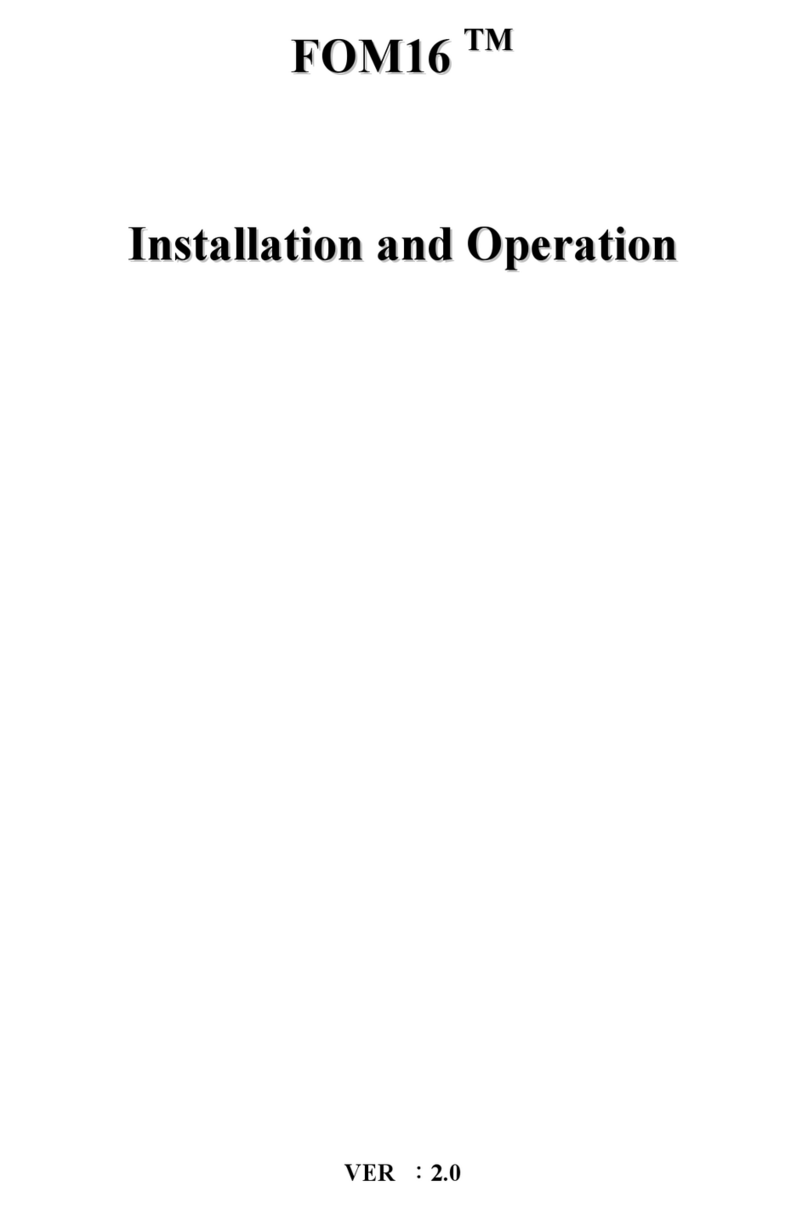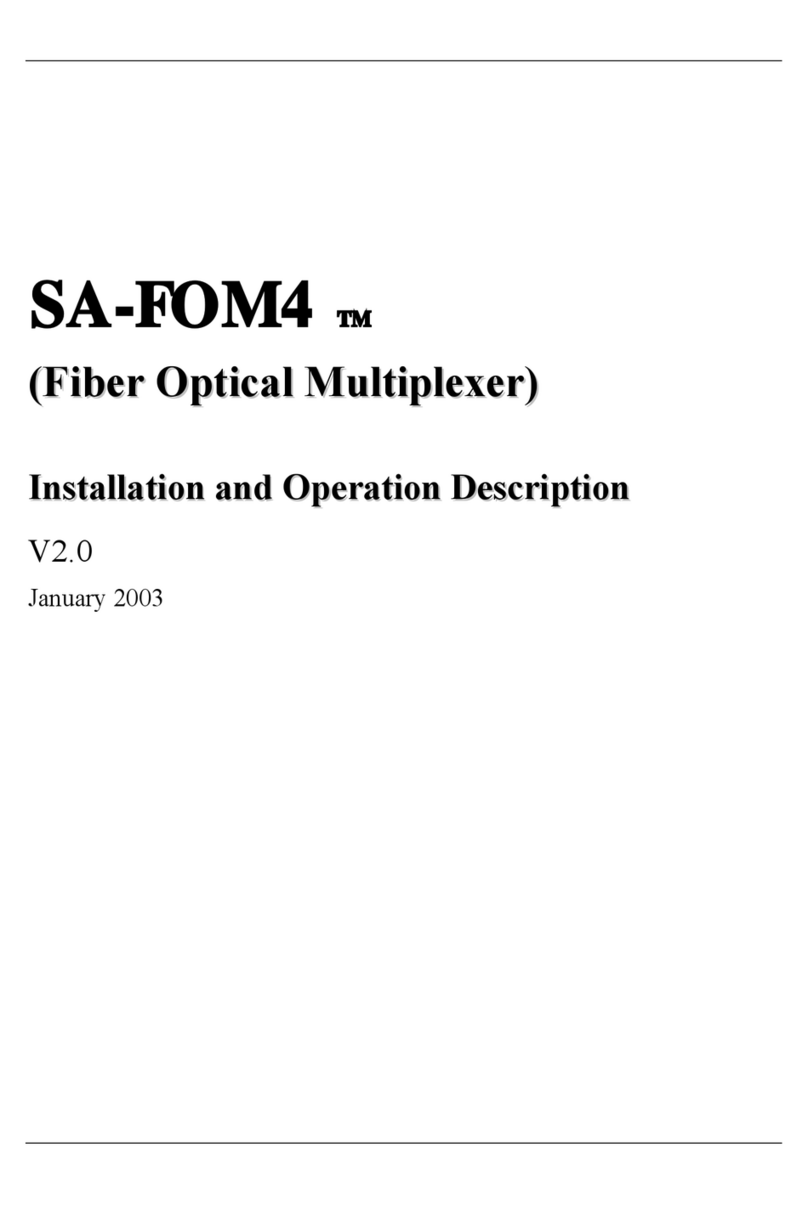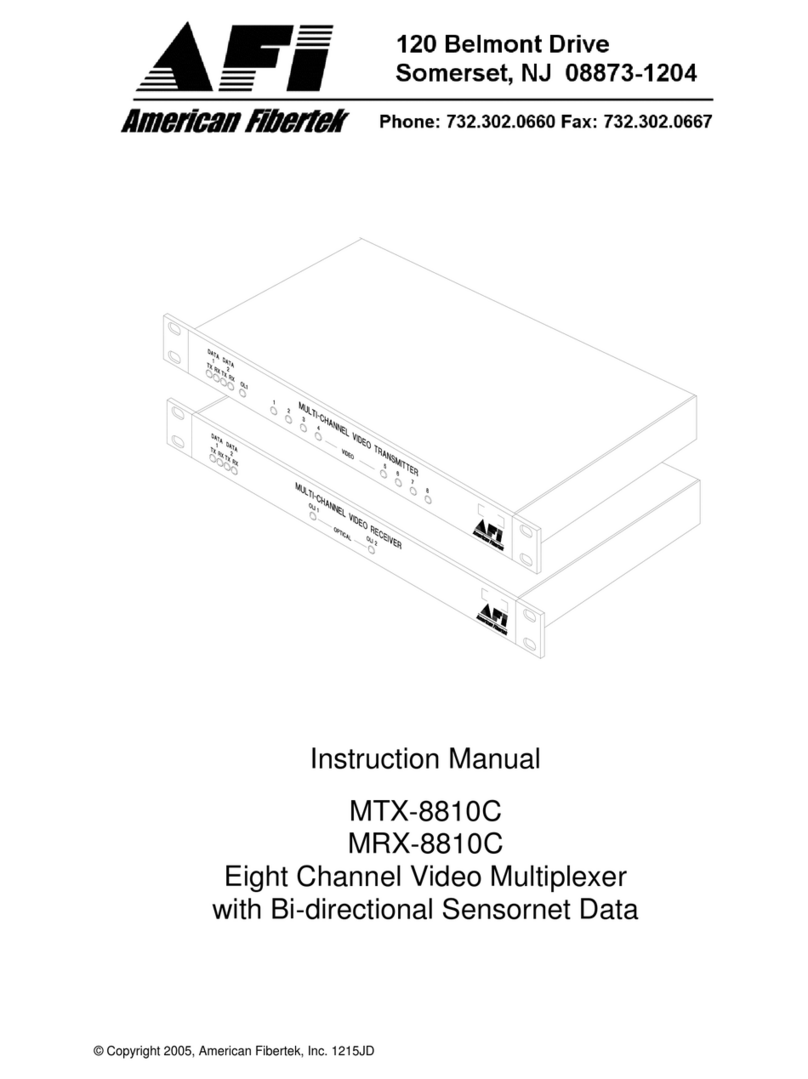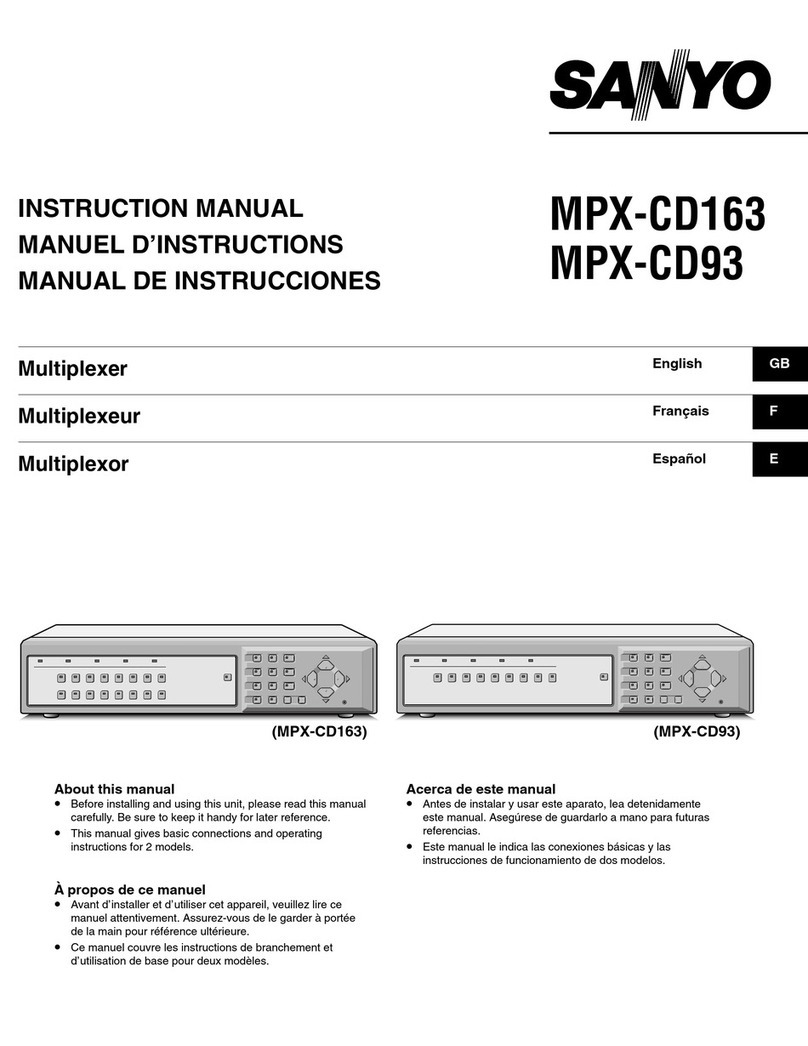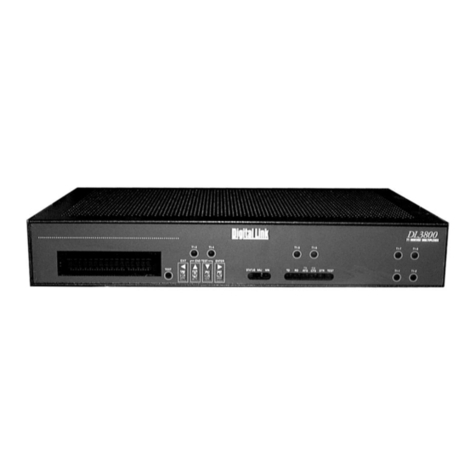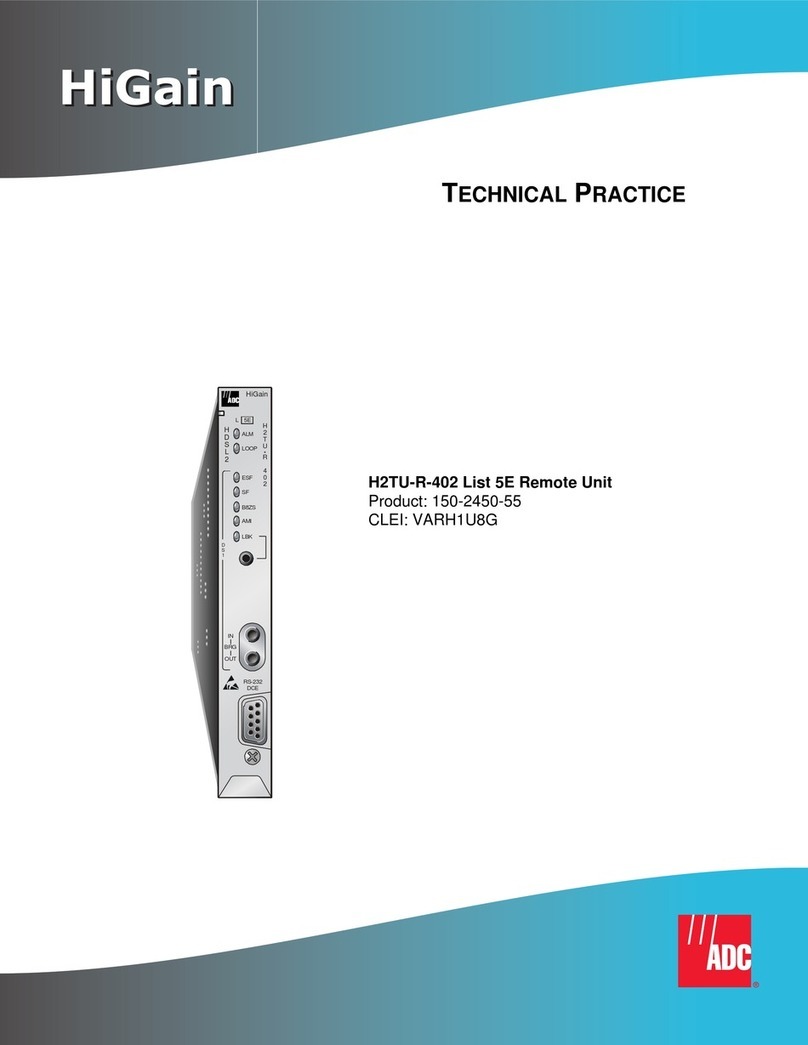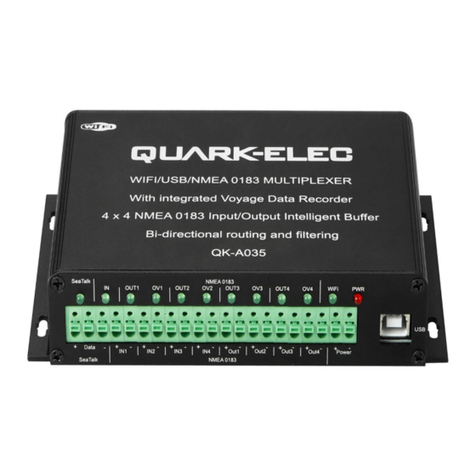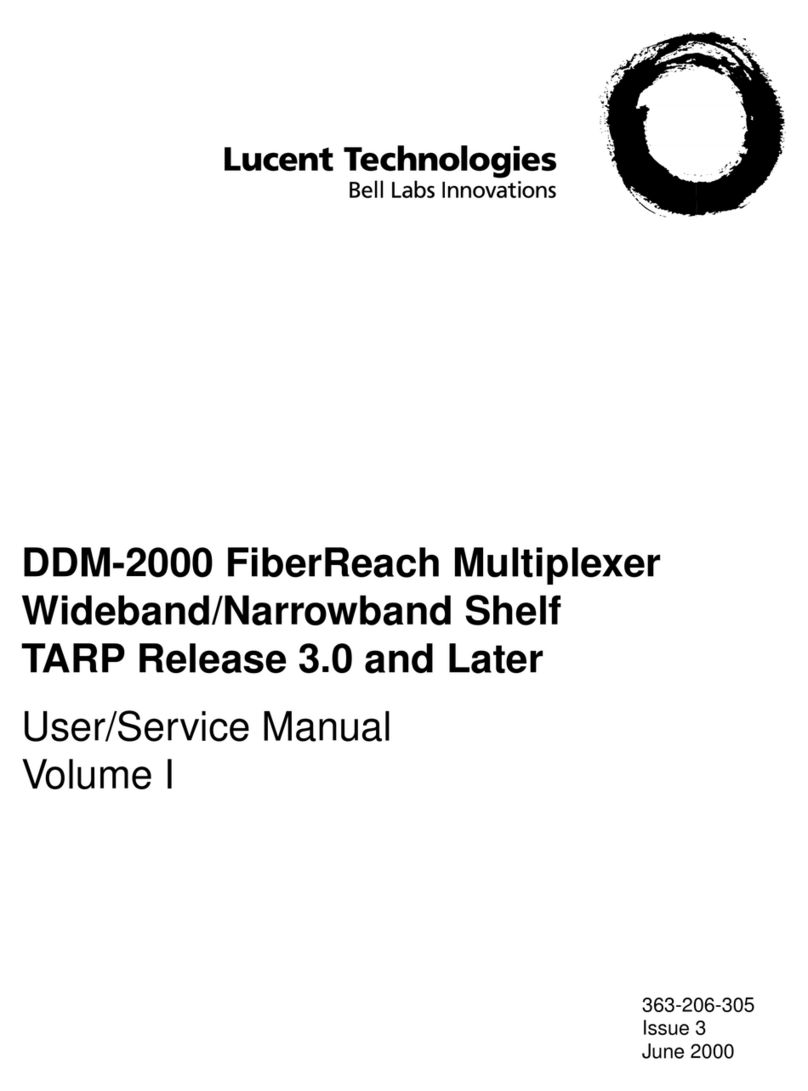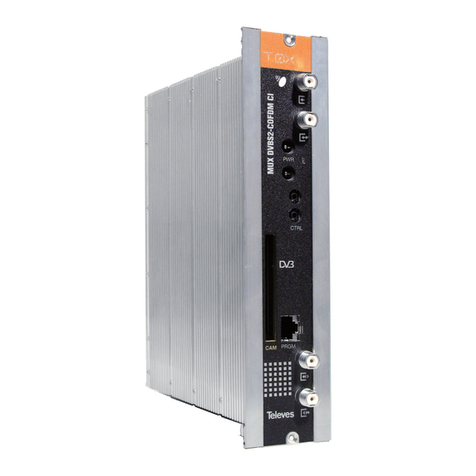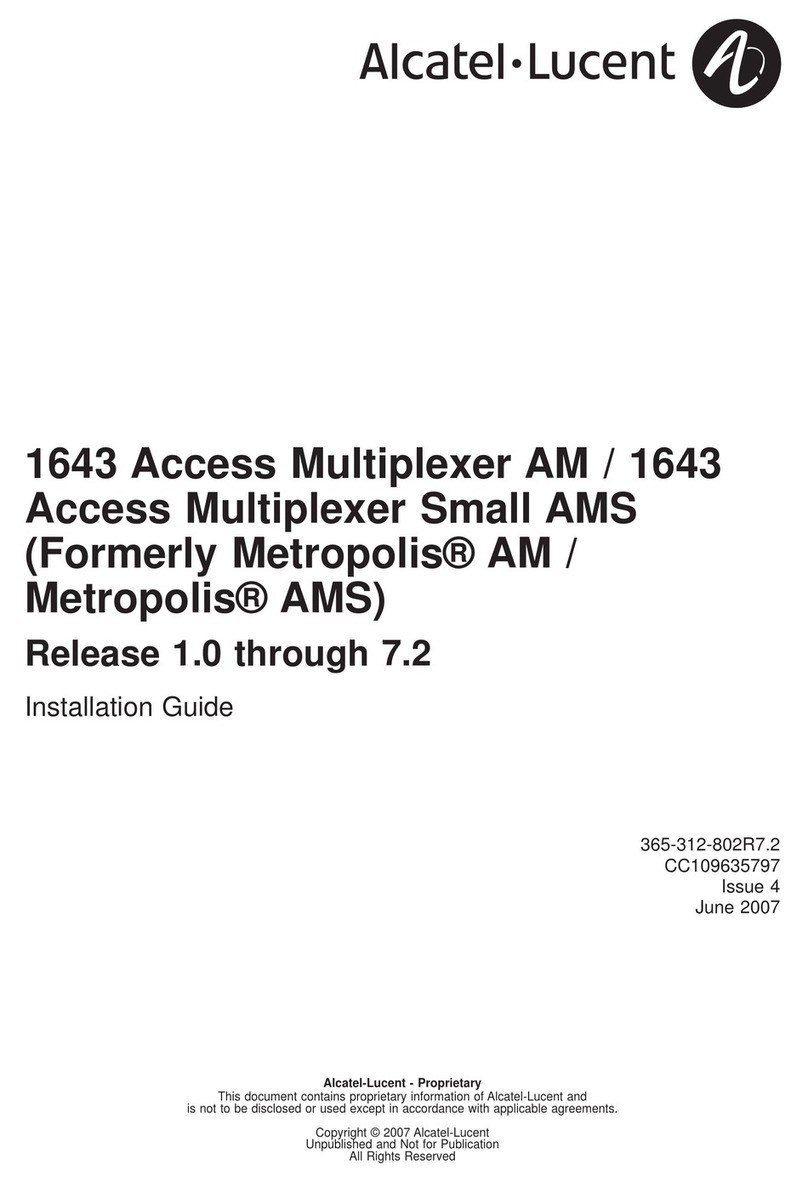FlexGain PLEX User manual

FLEXGAIN UNIVERSAL PLATFORM
FLEXGAIN PLEX, V2
SUBSCRIBER TDM MULTIPLEXER
User’s manual:
•Technical description
•Installation and configuration guide
•Program manual
Document version 1.3
Document identification: FG-PLEX-, V2
Document code: 59 14 02

User’s manual FlexGain Plex, V2
Version 1.3 2 from 99
©“Nateks”, scientific and technical center, 2006
Scientific and technical center has used its direction, best judgment and efforts in preparing
this document. All rights reserved. Reproduction of any part or all of the contents in any
form is strictly prohibited without the prior written consent of Nateks.

User’s manual
FlexGain Plex, V2
Content.
Version control.
Introduction.
PART 1. Technical description.
1.1 Application and general information about the FlexGain Plex, V2 multiplexer.
1.2 Features.
1.3 Ordering information.
1.4 Description of the FlexGain Plex ,V2 multiplexer.
1.4.1 General information on the device operation.
1.4.2 Brief description of the device operation.
1.4.3 Interfaces and LEDs.
1.4.4 Alarm signaling.
1.5 Е1 interfaces.
1.6 V.35 interface.
1.7 Ethernet interface.
1.8 Daughter board interfaces.
1.9 Signaling.
1.9.1 Transparent.
1.9.2 MMX (subscriber).
1.9.3 Definity®.
1.9.4 MEGATRANS.
1.10 lock modes.
1.10.1 Internal clock.
1.10.2 Е1 clock.
1.10.3 External clock.
1.11 V.35 clock.
1.12 Use of clock modes.
1.13 Cross-connect of Е1 streams.
1.14 Management.
1.14.1 Local management.
1.14.2 Network management via the TELNET protocol.
1.15 Test loops.
1.15.1 E1 loops.
1.15.2 V.35 loops.
1.16 Use of the cyclic redundancy check in the E1 stream.
1.17 Mechanic design.
1.17.1 Sub-Rack
1.17.2 Mini-Rack
1.17.3 Stand Alone
Part 2. Installation and programming guide.
2.1 Installation and cabling.
2.2 Configuration of FlexGain Plex,V2 devices.
2.2.1 Commands. Command structure.
2.2.2 Description of commands.
2.2.2.1 Command syntax.

User’s manual FlexGain Plex, V2
Version 1.3 4 from 99
2.2.2.2 Management of Sub-Rack devices.
2.2.2.3 Management of Mini-Rack and Stand Alone devices.
2.2.2.4 Performance management menu.
2.2.2.5 Fault and maintenance management menu.
2.2.2.6 Configuration Management menu.
2.2.2.7 Network Management menu.
Part 3. Programming guide.
3.1 Software downlading over the Ethernet network (NetLoader).
3.2 Software downloading over the serial interface with the help of the X-modem protocol.
3.3 Software downloading over the Ethernet network (X-modem or TELNET).
APPENDIX 1. Daughter boards.
APPENDIX 2. Connectors’ description.

User’s manual FlexGain Plex, V2
Version 1.3 5 from 99
Version control.
Version No. Date Content of changes
1.0 20.04.2005 Initial version.
1.1 20.01.2006 Corrected version.
1.2 02.02.2006 Description of the second E1 channel (PCM2) is
added. Changes are introduced into the document
concerning the software.
1.3 17.04.2006 Changes are introduced into the text of the
document.

User’s manual FlexGain Plex, V2
Version 1.3 6 from 99
Introduction.
The present document describes a subscriber TDM (Time Division Multiplexing)
FlexGain Plex, V2 multiplexer (hereafter referred to as a ‘multiplexer’, ‘device’, ‘module’).
The document contains the technical description of the device, installation, configuration
and operating instructions. Appendices containing additional information about the
multiplexer form also an integral part of the present document.
Note! Nateks may make improvement or changes in this document at any time and
without notice and as it sees necessary. The information in this document was prepared by
Natesk with reasonable care and is believed to be accurate. However, Nateks shall not
assume responsibility for losses or damages resulting from any omissions, inaccuracies or
errors contained therein. Any time when users have problems on our products and network
operation, they can feel free to contact us by sending a request to help@nateks.ru.
The equipment has been certified and has a certificate of conformity OS-1-SP-
0017.

User’s manual FlexGain Plex, V2
Version 1.3 7 from 99
PART 1. Technical description.
1.1Application and general information about the FlexGain Plex, V2 multiplexer.
A subscriber TDM Nateks FlexGain Plex, V2 device is a compact time division
multiplexer with a set of fixed and interchangeable interfaces. The multiplexer belongs to
the family of FlexGain devices and is compatible with other devices of this family as well as
FlexGain and FlexDSL equipment. In this case unification of mechanic and electric
parameters of the equipment and the common management are provided.
Typical schemes of application of the FlexGain Plex, V2 equipment are presented in
Figs 1, 2 and 3.
Flex
Gain
Plex,
V2
Flex
Gain
4XE2
1...8 FXO
V.35 E1
E1
E1
1...8 FXS
V.35
E1
Phone
Е1
Network
PBX
Router
Office No.1
E1
E1
Ethernet
Flex
Gain
Plex,
V2
1...8 FXO
V.35
PBX
Ethernet
Flex
Gain
Plex,
V2
1...8 FXO
V.35
PBX
Ethernet
Flex
Gain
Plex,
V2
E1
Ethernet
1...8 FXS
V.35
Phone
Router
Office No.2
Flex
Gain
Plex,
V2 Ethernet
1...8 FXS
V.35
Phone
Router
Office No.3
Flex
Gain
Plex,
V2 Ethernet
Figure 1. Organization of communication with remote offices.

User’s manual FlexGain Plex, V2
Flex
Gain
Plex,
V2 Flex
Gain
4XE-
NG
1...8 FXO
V.35 E1
PBX
Router
E1
MEGATRANS
(MASTER) Repeater 1 Repeater N MEGATRANS
(SLAVE)
Flex
Gain
4XE-
NG
Flex
Gain
Plex
V2,
FXS
V.35
Phone
Router
VF
VF
Flex
Gain
Plex,
V2
1...8 FXO
V.35
PBX
Router
VF
FlexGain
Plex, V2
VF
Phone
FXS
FlexGain
Plex, V2
VF
FXS
ТА
E1
E1
E1 E1
SHDSL SHDSL SHDSL
MASTER_URS_1
SLAVE_URS_1
SHDSL
E1
E1
SLAVE_URS_N
MASTER_URS_N
SHDSL
E1
SHDSL
Е1
Network
E1
FE_SS
CS_N
URS_N
URS_1
CS_1
HE_SS
Е1
Network
E1
...
Ethernet
Ethernet
Ethernet
Ethernet
Ethernet
Figure. 1. Organization of engineering-telephone communication in departmental communication systems.

User’s manual FlexGain Plex, V2
Version 1.3 9 from 99
E1 Е1
Network
Up to 8 FXS
V.35
Phone
Flex
Gain
Plex, V2
Router
Flex
Gain
Plex, V2
Up to 8 FXO
V.35
PBX
Router
Ethernet
Up to 8 VF channelsUp to 8 VF channels
E1
PBX
E1
PBX
Ethernet
E1
FG-Plex-E1 FG-Plex-E1
Figure 2. Scheme of multiplexing of analogue and digital interfaces into a digital E1 stream.

User’s manual FlexGain Plex, V2
Version 1.3
10 from 99
Abbreviations:
phone – a telephone set;
HE_SS – a head-end serviced station;
FE_SS – a far-end serviced station;
URS_1 … URS_N – an unserviced repeater station No.1…N;
CS_1 … CS_N – a control station No.1…N;
Е1 – an Е1 interface (G.703);
V.35 – an ITU-T V.35 interface;
ETHERNET – an IEEE 802.3 interface;
VF – a voice-frequency channel;
PBX – a private branch exchange;
FXS – Foreign Exchange Service;
FXO – Foreign Exchange Office;
SHDSL – an SHDSL (G.991.2) interface;
SLAVE_CS_1 … SLAVE_CS_N – a SLAVE modem on control station 1…N;
MASTER_URS_1 … MASTER_URS_N – a MASTER modem on unserviced repeater
station 1…N;
Repeater 1…Repeater N – a repeater with the cross-connect function;
Router –network equipment connected via the ITU/T V.35 interface (for example, Cisco
26xx Series with the V.35 interface).

User’s manual FlexGain Plex, V2
Version 1.3
11 from 99
The device provides multiplexing of time slots (TSs) of the E1 G.703 stream to the
V.35 interface and to a number of low-rate (up to 64 kbit/s) interfaces installed on
interchangeable (daughter) boards. Each daughter board containing a circuit board for four
channels is installed into the main devices, i.e., the basic module. It is possible to install up
to two voice daughter boards into one basic module. The ring generator for the FXS side
represents a separate RINGER daughter board.
The multiplexer allows the transmission of two E1 streams by installing an additional
FG-Plex-E1 board. In this mode the device can cross connect time slots between two
streams (PCM1 – the Е1 stream integrated to the basic board, PCM2 – the Е1 stream on
the FG-Plex-E1 expansion board).
The variety of devices manufactured at present is presented in the “Ordering
Information” section.
The device can be used to provide the following services:
•Increase in the telephone capacity (up to 8 numbers - address digits) by using
pairs of analogue FXO/FXS interfaces;
•Increase in the telephone capacity (up to 8 numbers - address digits) by using
the digital connection to the PBX over the E1 stream and the analogue FXS
interfaces;
•Voice-frequency channels with two- and four-wire connections (up to 8);
•Organization of the telephone capacity and voice-frequency channels
according to the “point-multipoint” scheme;
•Organization of voice-frequency channels with the E&M signaling (to order);
•Data transmission channel over the V.35 interface at a rate from 64 to 1984
kbit/s;
•Cross-connect of time slots of two E1 streams.
The number of services is being expanded as the variety of daughter boards
increases.
Each Е1 interface supports the following operation modes:
•PCM31 – a framed stream with the formation of the frame alignment;
•PCM30 – a framed stream with the formation of the frame alignment and
multiframe alignment;
•PCM31C – a framed stream with the formation of frame alignment and
organization of the cyclic redundancy check by the CRC4 method;
•PCM30C – a framed stream with the formation of frame alignment and
multiframe alignment and organization of the cyclic redundancy check by the
CRC4 method.

User’s manual FlexGain Plex, V2
Version 1.3 12 from 99
Note: The unframed DIRECT mode (all TSs are mapped on the V.35 interface) is not
supported by the current software.
Electric parameters of E1 interfaces completely conform with the G.703
recommendations and the functional parameters comply with the ITU-T G.704
recommendations.
In PCM30 and PCM30C modes the signaling information about the status of voice
channels is transmitted, by default, in the sixteenth TS of the E1 stream. The device
supports single-bit (“Transparent”) signaling over one dedicated channel, two different
signaling methods over two dedicated channels: subscriber (“MMX”), “Definity®” signaling
and MEGATRANS signaling, which is transmitted in the subscriber time slot.
Note: The E&M signaling is to be ordered.
The signaling over one channel transmits the status of the subscriber loop in the bit
“a” of the signaling TS. The signaling over two channels uses bits “a” and “b” of the given
time slot. The MMX signaling is used to organize interaction between two devices, which
support this type of signaling (for example, FlexGain Plex, FlexGain Plex, V2, Nateks-
MMX, FlexDSL IAD). The signaling referred to as “Definity®” is used for direct digital
connection of the device over the E1 stream to the Definity® PBX of the G3R family with
the boards of digital connection lines (analogue lines) TN2464BP. The operation of the
device when it is connected digitally to other PBXs as well as to the equipment whose
software differs from the software specified in this document requires additional connection
works.
Note: “Definity®” is the registered trademark of the Lucent Technologies corporation.
To transmit signaling information over incomplete E1 channels, when the number of
time slots is less than sixteen, the devices supports the mutual interchange of TS No. 16
with any other time slot except for the zeroth time slot. The embedded means of
diagnostics and error statistics complying with the ITU-T G.826 Recommendations allow
one to calculate the availability and unavailability time of the channel and to estimate:
•The number of errors in the cyclic redundancy check;
•The number of errored frame and multiframe alignments;
•The number of errored seconds;
•The number of severely errored seconds;
•To calculate the coefficients of the cyclic redundancy check and errored
seconds.

User’s manual FlexGain Plex, V2
Version 1.3 13 from 99
The V.35 interface allows one to configure flexibly the control lines and clocking
options, which provides its operation with a wide variety of telecommunication equipment.
The testing of the multiplexer and the performance check of the device and the
equipment connected to it is provided by the possibility of arranging technological loops
over E1 interfaces for the local and remote devices and over the V.35 interface for the local
device.
The use of the Flash memory as a read-only memory provides simple downloading
of new software versions and reliable storage of current configurations and protection from
power failures.
The device supports three clock modes, which can be chosen by the user during the
device configuration:
•The INTERNAL mode. This mode uses an internal clock source with a frequency
of 2048000 +/- 100 Hz. This mode is used by default and is configured with the
help of <SETDEFAULT> and <SETCLOCK INT> commands in the
CONFIGURATION MANAGEMENT menu;
•The E1 mode. This mode uses a clock signal recovered from the received E1
stream. This mode is activated by the <SETCLOCK PCM1> command in the
CONFIGURATION MANAGEMENT menu;
•The EXTERNAL mode. In this mode a clock signal is used from the external
clock source, whose parameters comply with the ITU-T Rec. G.703.10.
Synchronization from an external source for Mini-Rack devices is possible when
the clock signal is supplied to the “2048 kHz IN” input. Synchronization from an
external source for Sub-Rack devices is possible when ACU, CMU modules and
the Sub-Rack device are installed in the same shelf and the 2048-kHz clock
signal is supplied to the “2048 kHz IN” input. If the input signal of the external
clock is lost, the device switches to the internal clock source. This mode is
activated by the <SETCLOCK EXT> command in the CONFIGURATION
MANAGEMENT menu.
The device operation is controlled with the help of visual alarms, which show the
statuses of its ports. Alarm conditions trigger the warning relays, to which visual and
audible signal devices can be connected.
The device allows one to control and manage it as follows:
•Local management over the RS-232 interface by using the VT100 terminal or
a personal computer emulating it;
•Network management over the TELNET protocol.
The multiplexer has three mechanic designs:
•Sub-Rack – a unit to be inserted into a 19’’ FlexGain shelf (FG-R-W-E), and
FG-LIT and FG-COMPACT shelves;

User’s manual FlexGain Plex, V2
Version 1.3 14 from 99
•Mini-Rack – a unit to be inserted into a 19’’ cabinet;
•Stand Alone – a unit to be mounted on a horizontal surface.
These modular designs allow one to change and expand the functionality of the
devices by installing additional daughter boards without changing its hardware, i.e., the
basic module. The shelf with the Sub-Rack multiplexer installed in it as well as Stand Alone
multiplexers are powered from a grounded primary DC source (–48 V). The Mini-Rack
multiplexer can be powered either from a grounded primary DC source (–48 V) or and AC
source (220 V).
1.2Features.
The FlexGain Plex, V2 multiplexer has the following functions and peculiar:
•Е1 interfaces fully conform with ITU-T Recs G.703/G704;
•HDB3 line encoding;
•Interchangeable analogue interfaces (up to two boards for four channels
FXS/FXO/E&M);
•Digital V.35 interfaces embedded into the motherboard;
•Possibility to install interfaces of different types into one multiplexer:
oFXO to be connected to the PBX;
oFXS to connect telephone sets and other analogue subscriber devices;
oЕ&Мto connect two- and four-wire voice-frequency channels with the noise
suppression function (the noise suppressor is active only for the
MEGATRANS signaling);
•Support of several types of signaling:
oTRANSPARENT;
oMEGATRANS;
oMMX;
oDEFINITY;
oE&M signaling over the voice-frequency channels (to order);
•Possibility to interchange the signal time slot (CAS) with any subscriber time slot;
•Interchangeable expansion module to provide two E1 streams (PCM2);
•Complete cross-connection between E1 streams (PCM1 and PCM2);
•Automatic cross-connect of signal bits of CAS channels upon cross-connecting of
the subscriber time slots;
•Possibility to install the multiplexer into all types of FlexGain shelves: FlexGain (FG-
R-W-E) shelf, FG-LIT and FG-COMPACT shelves;
•Possibility to install the multiplexer into a hermetic casing (to order);
•Output of analogue channels to the rear (to order) and front panels;
•Visual alarm on the front panel;
•Possibility to connect external alarm signaling to relays of urgent and non-urgent
alarms;

User’s manual FlexGain Plex, V2
Version 1.3 15 from 99
•Possibility to connect two FlexGain Plex, V2 multiplexers at a distance of 2 km
without any additional line equipment (with the help of a 1.2-mm cable);
•Simple structure of commands;
•Local (VT100) or remote (Telnet) management;
•Possibility to upgrade the software (“flash-memory”);
•In-built system of diagnostics and error statistics according to ITU-T Rec. G.826;
•Compatibility with a flexible FlexGain Plex multiplexer;
•Compatibility with a flexible NATEKS ММХ multiplexer and the family of FlexGain
and FlexDSL equipment.
1.3Ordering information.
The table below presents ordering information for basic modules and daughter
boards of FG-Plex-, V2 multiplexers.
Table 1. Ordering information for FlexGain Plex, V2 multiplexers.
Model Description
FG-Plex-MR, V2 Basic module of the multiplexer, Mini-Rack design, installed
into a 19” cabinet.
FG-Plex-SR, V2 Basic module, Sub-Rack design, installed into a FlexGain (FG-
R-W-E) shelf, or FG-LIT and FG-COMPACT shelves.
FG-Plex-SAN, V2 Basic module, Stand Alone design for desk top applications.
FG-Plex-4FXO Daughter board for four FXO interfaces.
FG-Plex-4FXS Daughter board for four FXS interfaces.
FG-Plex-4E&M Daughter board for four voice-frequency channels.
FG-Plex-E1 Board of an additional E1 port, which is installed on FG-Plex-
XX, V2.
FG-CAB-PLEX-N35-DTE V.35 DTE cable for FG-PLEX-xx devices (DB26m - MRAC34f).
FG-CAB-PLEX-N35-DCE V.35 DCE cable for FG-PLEX-xx devices (DB26m -
MRAC34m).
To obtain more detailed information about the composition of the sets and new
models, contact the representative of the manufacturer.

User’s manual FlexGain Plex, V2
Version 1.3
16 from 99
1.4Description of the FlexGain Plex ,V2 multiplexer.
1.4.1 General information on the device operation.
The FlexGain Plex, V2 multiplexer is a highly integrated device intended for
multiplexing up to eight analogue voice channels, the V.35 data transmission channel into
E1 G.703 streams. The use of a powerful HDB3 line encoding allows one to connect to it
the equipment located at a distance of up to two kilometers (by using a 1.2-mm cable). The
FlexGain Plex, V2 multiplexer is a valuable device of the FlexGain family, which provides
interaction with other devices of the FlexGain and FlexDSL families.
The structural scheme of the device is presented in Fig. 4.
1.4.2 Brief description of the device operation.
Signals from the subscriber (station) equipment, connected to analogue interfaces
15.1-15.4 and 17.1-17.4 of daughter boards 15 and 17, after the analogue-to digital
conversion on the codex, which is embedded in the daughter boards, are fed in a digitized
form to interfaces of daughter boards 14 and 16, which perform mechanic and electric
coupling of the boards with the basic motherboard of the device. Cross-connect matrix 7
provides two-way cross-connection of signals between time slots of E1 streams and:
•Interfaces of daughter boards 14 and 16;
•V.35 framer 12.
The cross-connect of time slots of E1 streams is performed according to the current
configuration of the multiplexer. The cross-connected output streams are fed to output
framers 5and 41, which buffer and equate data, form frame alignment and multiframe
alignment of the stream structure, calculate the CRC4 check sum, insert national Sa bits
into the corresponding bit fields of the zeroth TS of the stream. The structures of FAS,
MFAS and CRC4 of the formed stream correspond to ITU-T Rec. G.704.
Signals from framers 5and 41 are transmitted to microchips of output network
interfaces 2 and 38, where TTL levels are converted into the HDB3 line code. Then, the
signal via the circuit of galvanic separation and protection 1 and 37 is fed to the E1-port
interface. The input E1 stream, which is transmitted from the circuit of galvanic separation
and protection 3and 39 is fed to receivers of network interfaces 4 and 40. The receiver
performs the following:
•suppresses noises;
•recovers clock signals from the input E1 stream;
•converts signals into the levels of CMOS logics.

User’s manual FlexGain Plex, V2
Version 1.3 17 from 99
The converted signal is transmitted to input framers 6 and 42,which perform the
following:
•searches clock symbols in the input stream;
•buffers and equates data in this stream;
•verifies data by calculating and checking CRC4 check sums for each E1
multiframe;
•separates national Sa bits from the streams.
Cross-connect matrix 7is connected to outputs of framers 6and 42, which
distributes the time slots of the received E1 stream between V.35 framer 12 and interfaces
of daughter boards 14 and 16. By using input 18 and output 19 mixers, the cross-connect
matrix is coupled to unit 20 of fast signal processing. Unit of fast signal processing 20 is
based on a highly efficient digital signal processor (DSP) and is used to:
•analyse zeroth time slots of input E1 streams to separate national Sa bits;
•form a sequence of national Sa bits, which are transmitted then to the output
framer;
•analyse time slots carrying signaling (by default TS No.16) of the input stream
to separate the incoming telephone signaling of voice interfaces P1-P8 (in
PCM-30 and PCM-30C modes);
•form a bit sequence of the outcoming telephone signaling of voice interfaces
P1-P8 (in PCM-30 and PCM-30C modes).
The daughter board RINGER is a ring generator for FXS units (daughter boards 15
and 17). The electric and mechanic coupling of the board RINGER with the basic
motherboard of the multiplexer is provided with the help of an interface of daughter board
8.
The common management of the device units and their performance control is
performed by central ARM processor 29. The management is performed in accordance
with the downloaded software and current configurations. The software and configurations
are stored in nonvolatile FLASH ROM 36. The live data are stored in RAM 35. The
processor also tracks the appearance of alarm conditions. If alarm conditions appear,
commands are sent to cross-connect 34, which manages warning relay 33. Clock 30 is
used to trace the date and current time. Display unit 28 consisting of 12 LEDs shows the
device statuses and statuses of its interfaces. The display unit is managed by the central
processor. Information in the multiplexer is processed by clock synchronization. There can
be the following clock sources:
•a signal recovered from the E1 stream;
•external clock source 22;
•internal clock 27.

User’s manual FlexGain Plex, V2
Version 1.3 18 from 99
The choice of the clock source and the generation of clock signals is performed by
unit 21. The configuration of the operation parameters, switching between the operation
modes and control of the device status are performed:
•Locally via terminal port 31 with the help of the VT100 terminal or a personal
computer, which emulates the terminal. The software can be downloaded
though this port as well (by using the X-MODEM protocol);
•Through the local network by using the TELNET protocol. The software can
be downloaded from the local network by using the X-modem or a special
program (NETLOADER.EXE). To receive this program, which is distributed
free of charge, contact your dealer. The programming of the device is
considered in detail in the “Programming guide” section.
The device is powered with +3.3 V, +5 V, +12 V from inbuilt DC/DC converters 24,
25, 26.
The range of input voltages of the secondary power supply source varies from -38 to
-72 V. Mini-Rack devices have AC/DC converters 23 to convert 220 V AC into -48 V DC,
which is used to feed DC/DC converters.

User’s manual FlexGain Plex, V2
Version 1.3 19 from 99
Cross-connect
matrix
DSP
Input
mixer
Output
mixer
V.35 framer
Interface of
daughter board 1
Interface of
daughter board 2
V.35 port
Daughter
board 1
Daughter
board 2
15.1
15.2
15.3
15.4
17.1
17.2
17.3
17.4
Ethernet framer Ethernet port
FLASH
RAM
RS 232/TTL
terminal port
RS 485 interface
Alarm relays
Alarm relay switch
Display unit
Reference
Clock
shaper
Internal clock
2 048 kHz
DC – DC
converter
-38 ... -72 V +5 V
AC – DC
converter
~220+/-10% -48 V
DC – DC
converter
-38 ... -72 V +3,3 V
DC – DC
converter
-38 ... -72 V +12 V
Output
Framer
PCM1
CRC4
Block
CRC4
Block
Input
Framer
PCM1
Management bus
Management bus
Input from
external clock
2048 kHz
Output PCM1
E1 G.703
2 048 kbit/s
Input PCM1
E1 G.703
2 048 kbit/s
Interface of the
RINGER
daughter board
RINGER daughter
board
Data transmission
Clocking
ARM
CPU
On-line clock
15.1 - 15.4 - analogue interfaces
17.1 - 17.4 - analogue interfaces
12
4
3
5
6
22
21
27
28
23 24
25 26
7
18 19
20
29
89
10
11
12 13
14 15
16 17
35
36
30
31
32
33
34
Network
filter
Network
filter
37
39
Network
filter
Network
filter
38
40
Output
Framer
PCM2
CRC4
Block
CRC4
Block
Input
Framer
PCM2
41
42
Output PCM2
E1 G.703
2 048 kbit/s
Input PCM2
E1 G.703
2 048 kbit/s
FG-Plex-E1 Board
Figure 3. Structural scheme of FlexGain Plex, V2.

User’s manual FlexGain Plex, V2
Version 1.3
20 from 99
1.4.3 Interfaces and LEDs.
Figure 5 shows the front panels of the devices of different mechanic designs. The
aspect ratio of different mechanic designs is not strict in this figure.
Table 2 presents the description of interfaces and LEDs.
Table 2. Interfaces and LEDs.
Availability
in different mechanic designs
Notations Description
Sub-Rack Mini-Rack Stand Alone
LEDs
E1 LED displaying the status of the Е1
port
•••
V.35 LED displaying the status of the V.35-
port
•••
1 LED displaying the status of the voice
P1 port
•••
2 LED displaying the status of the voice
P2 port
•••
3 LED displaying the status of the voice
P3 port
•••
4 LED displaying the status of the voice
P4 port
•••
5 LED displaying the status of the voice
P5 port
•••
6 LED displaying the status of the voice
P6 port
•••
7 LED displaying the status of the voice
P7 port
•••
8 LED displaying the status of the voice
P8 port
•••
Eth LED displaying the status of the
Ethernet port
•••
- System LED (S) •••
Interfaces
E1 Е1 interface •••
Ethernet Ethernet interface •••
V.35 V.35 interface •••
1 Interface of the voice P1 port •••
2 Interface of the voice P2 port •••
3 Interface of the voice P3 port •••
4 Interface of the voice P4 port •••
5 Interface of the voice P5 port •••
6 Interface of the voice P6 port •••
7 Interface of the voice P7 port •••
8 Interface of the voice P8 port •••
-48VDC Power connector (stationary or
battery) -48 V o••
Table of contents
Other FlexGain Multiplexer manuals
Popular Multiplexer manuals by other brands
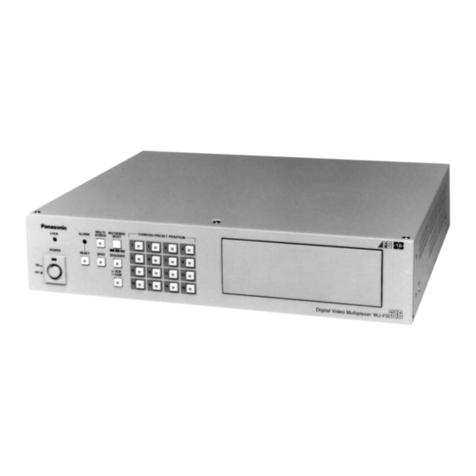
Panasonic
Panasonic WJ-FS616C operating instructions

Feig Electronic
Feig Electronic OBID ID ISC.ANT.UMUX-A installation manual
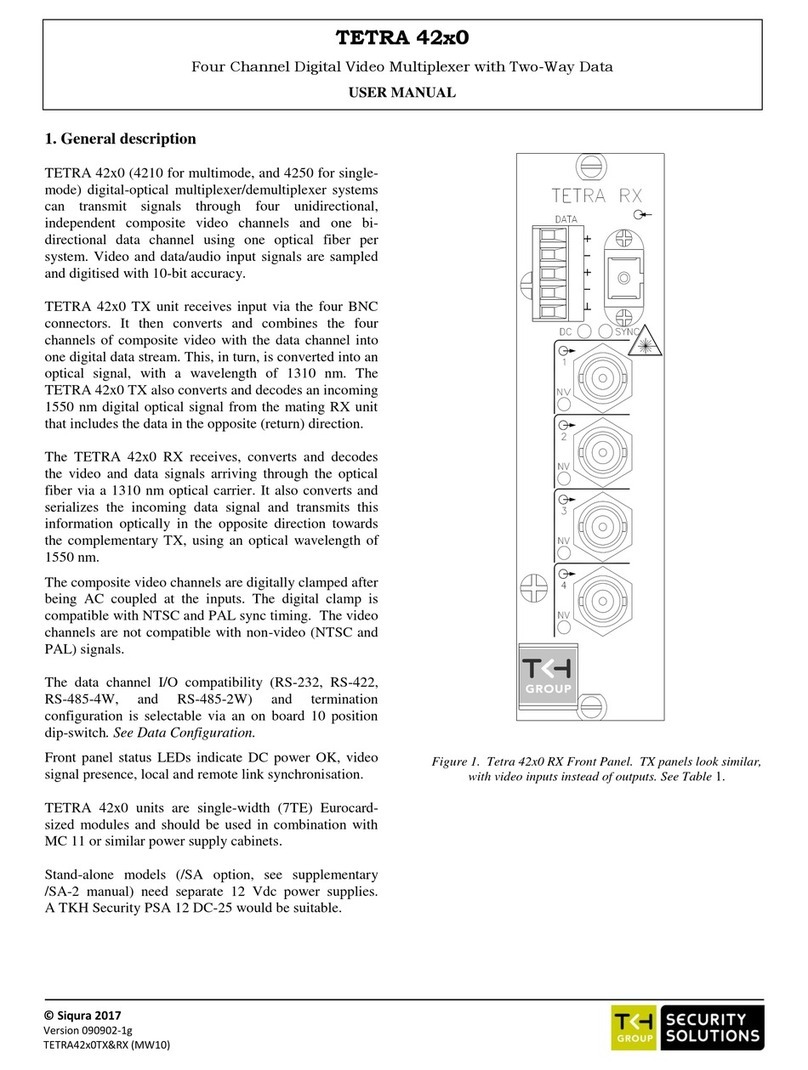
Siqura
Siqura TETRA 4210 user manual
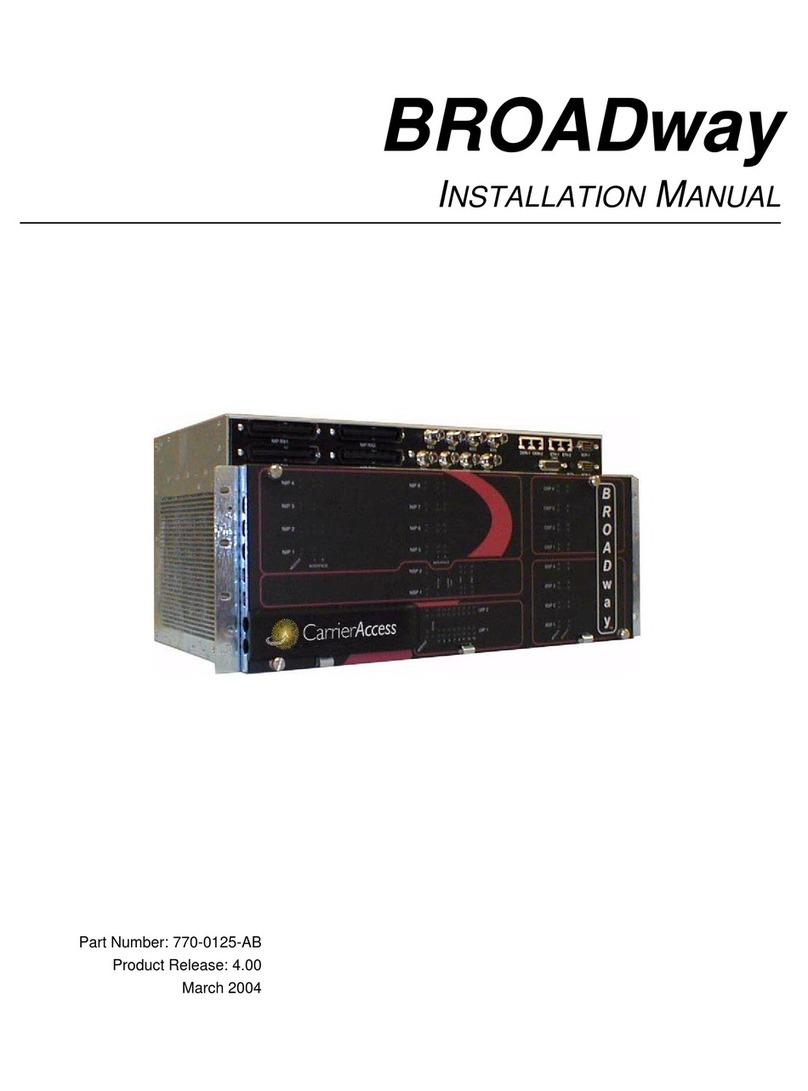
Carrier Access
Carrier Access BROADway System 770-0125-AB installation manual
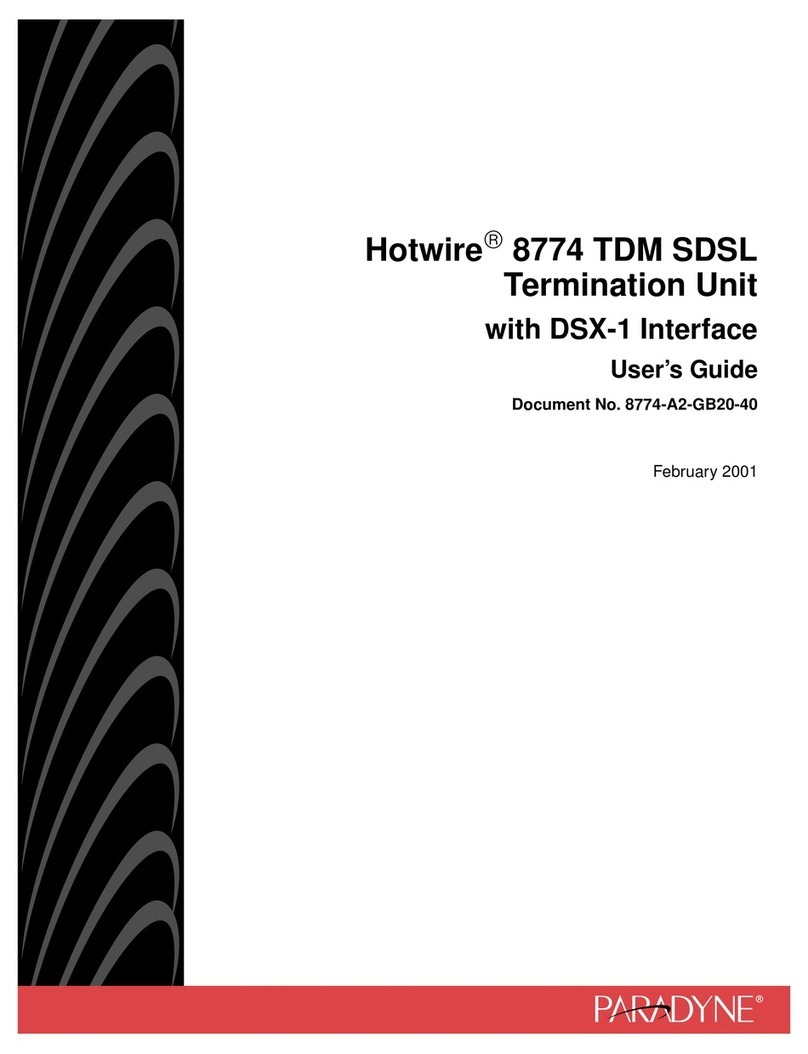
Paradyne
Paradyne Hotwire 8774 user guide
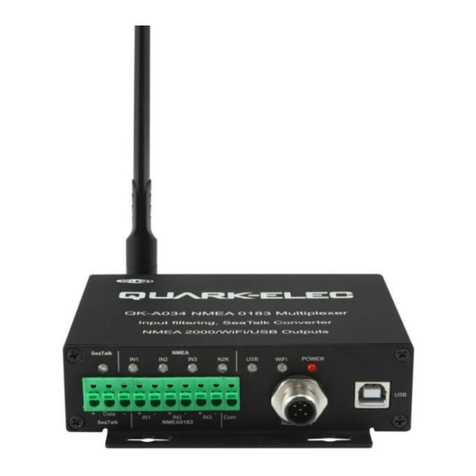
Quark-Elec
Quark-Elec QK-A034-B manual
